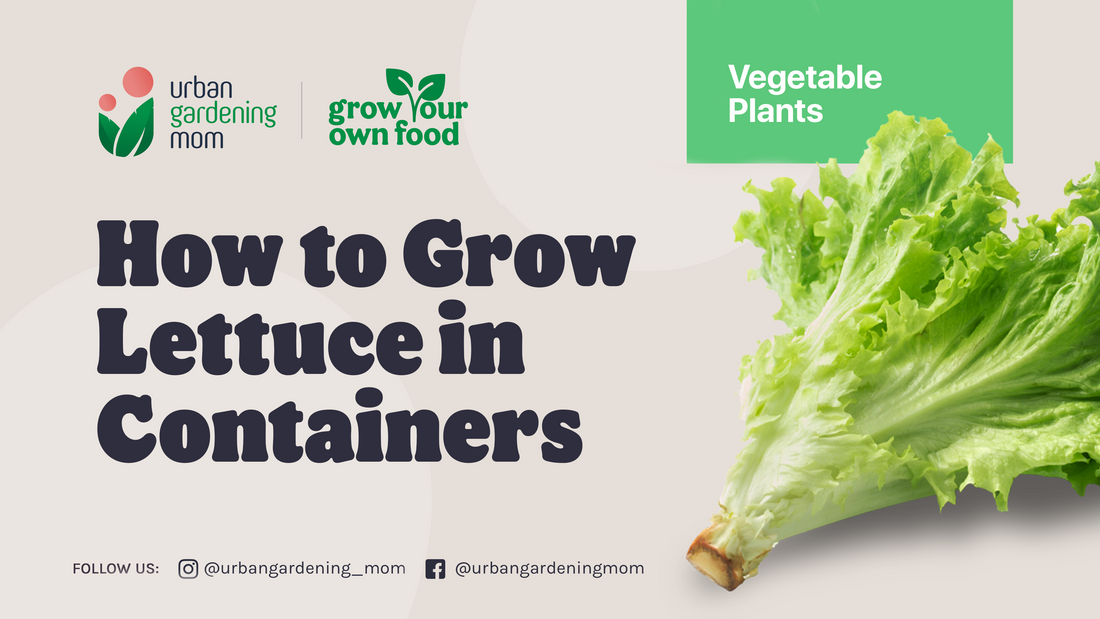
Growing Your Own Lettuce at Home
Share
Summer in the Philippines can get extreme at times and this leads to premature bolting for some vegetable crops, like lettuce. Thankfully, local seed companies have developed slow-bolting variants that are heat resistant. These hybrid seeds adapt well in hot climates, like what we have here in Manila, so we can now enjoy our lettuce harvest all-year round. But what I like most about lettuce is that it can be grown in medium-sized containers. This makes it perfect for home gardening, as it doesn't occupy a lot of garden space. You can grow lettuce in your patio, balcony or rooftop, provided that you have sufficient sunlight. Some people grow them indoors through hydroponics or by installing high- powered grow lights. No matter what media you use, growing your own lettuce is definitely a healthy choice, especially nowadays when more people prefer organic food.
Sowing the seeds
The first thing to remember is to choose a lettuce variety that can withstand heat and will not bolt easily. Typically, the red looseleaf types of lettuce are the easiest to grow because they are generally heat-tolerant. But other hybrid variants of other types of lettuce have also been developed by local seed companies so that plants are able to adapt well in our tropical setting. If you want to grow romaine types for instance, you may inquire with your supplier if a heat-resistant variant is available.
To start lettuce seeds, simply sprinkle a thin layer of seeds over the soil bed or potting medium. You may also start some seeds in small seed starting pots or paper cups, then transfer them to rectangular planters after 3 weeks. When growing lettuce in a container, choose a medium- sized pot with at least 8 inches in depth. Keep the soil moist all the time by spraying water at least once a day.

The seeds will sprout within 5 days. Once the seedlings have grown at least 2 inches tall, start thinning or pulling out the weaker seedlings and leave about an inch of space in between. Do not discard the pulled-out seedlings- they are an excellent garnish for sandwiches or salads (as microgreens). During extremely hot weather conditions, lettuce seedlings may look wilted when exposed to the sun for more than 2 hours. Allow the plant to recover in the evening by making sure that the soil is always moist, or does not dry out.
Plant Maintenance
The lettuce seedlings tend to grow slowly at the start. As they develop more roots and leaves, they grow a lot faster. Provide at least 4 hours of direct sunlight. Morning sun is the best. If it gets too hot, provide partial shade or net covers that can filter some of the sun's rays.
Applying plant nutrients at least once a week or every other week. Vermicast or rabbit manure are excellent sources of plant nutrients. You may also use processed chicken manure during the growing stage.
Lettuce loves moist soil. Water the soil or potting media once a day during summer, and less often during other months. Do not let the soil dry up completely because most lettuce variants are not drought-tolerant. During rainy days, ensure that excess water flows out freely. Provide more drainage holes if necessary to prevent water logged roots.

Beware of pests.
Lettuce is prone to a lot of pests. If available, sprinkle diatomaceous earth on the ground, around the plant's roots as a way to prevent slugs and other crawling insects. Neem oil is also a useful way of controlling pests. Spray a neem-based solution over the plant leaves at night once a week, or more often until the pest infestation is controlled.
Watch out for signs of cabbage worms which are the larvae of white moths. They can destroy your plants overnight if undetected. White moths usually lay their eggs at the plant's core. Eradicate them at this early stage by sprinkling diatomaceous earth over the infested area before the eggs start to hatch or become destructive tiny little worms. Spray neem oil once a week as a preventive measure against destructive pests.
Harvesting the Lettuce Leaves
After 6- 8 weeks, your lettuce should be ready for harvest. Do not wait too long before each harvest because over mature lettuce may taste a bit bitter or bland. In hot climates, most lettuce varieties can grow up to about 8 inches. You can either cut-and-regrow the lettuce leaves or just harvest the entire plant. If you cut-and regrow, start harvesting from the sides and harvest only up to 50% of the leaves. This is enable the plant to store energy and grow more leaves so they can be ready again for another round of harvest.
Alternatively, you may harvest the entire plant by cutting off the top part from the root base. Harvest them early in the morning, because that is when they are crisp. To stay crisp, wash the leaves only when you are about to serve them. Pack them in resealable bags or sealed containers and before placing them in the refrigerator vegetable compartment. To ensure a continuous supply, sow a few lettuce seeds in medium-sized containers every week.
Happy gardening!



8 comments
what variety of lettuce? 🙂
What type of lettuce seeds you used?
Thank you, it was very helpful. Since lettuce are very sensitive, i plan to grow hydrophonics lettuce, i wish you can give me some advice and techniques.tnx
Which varieties you can recco for manila weather?
This is a great report! But the pictures aren’t working. Please fix. Thanks!